Another Twitter iPhone Livestreaming Session
Posted: 28 March 2015
|
Open: Friday, 27 March 2015, 1810 MST Temperature: 94°F |
Session: 800 Conditions: Clear |
This would be my second night of doing Twitter Periscope livestreaming of views through the telescope. The previous session was likely the very first use worldwide of the newly released Periscope app for astro livestreaming. I would use what I learned during my first livestreaming with the iPhone on this night.
But first, I viewed Venus, 83X, at 1821 MST. Its gibbous phase was nicely visible against a bright blue sky. I mounted the iPhone 5s on the 8" LX200-ACF telescope using the modified Magnilux MX-1 Afocal Adapter. I used a 1.25" 26mm eyepiece + Moon Filter + 3X TeleXtender, yielding a magnification of 231X. I did some digital zoom and exposure adjusting in the Camera app and used the Earbuds/Mic volume control as a remote shutter release. I did a 10 second slo-mo (120 fps) video and stacked the 1142 frames in the video using Keith's Image Stacker for this image:
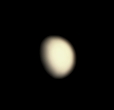
Just before sunset I did my first Livesteam event of the night. During the 4 minute show I provided video (with audio narration) of the SkyShed POD from the outside, the 8" telescope, a little of the interior of the POD, a closeup of the MX-1 Afocal Adapter, and some of the sky as seen from Cassiopeia Observatory. Here are three frames from the Livestream video:
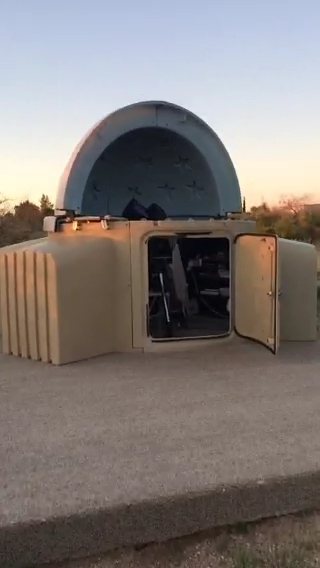
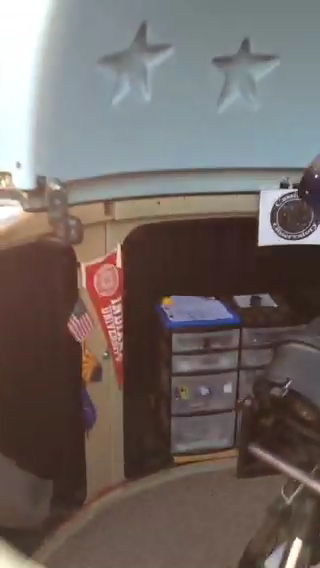
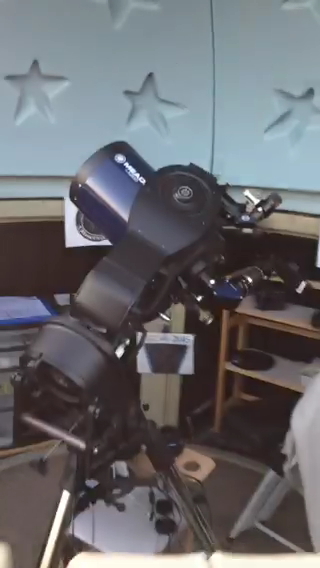
I then did a short Livestream through the 8" telescope showing Venus. I was using the Moon Filter but the Periscope app was overexposing the planet. I ended the Livestream, removed the Moon Filter and added a 2" Polarizing Filter set to reduce the planet's brightness. That worked much better and beginning at 1858 MST I was able to provide this (mirrored) view of Venus (some digital zoom was used in Periscope for much of the nearly 6 minute Venus Livestream):
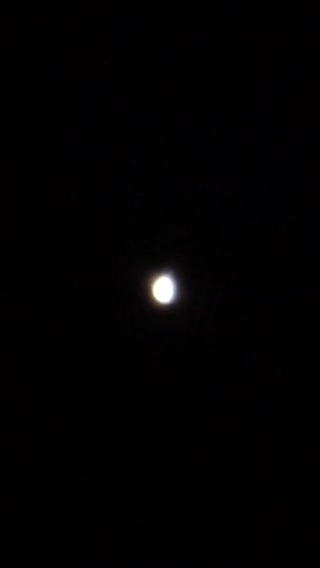
I ended the Venus Livestream, slewed to Jupiter, and worked with the Polarizing Filter to get a good view of the planet. Although the view of the planet in the video recording was faint, did a 10 second slo-mo video recording, stacking 1158 frames for this image:
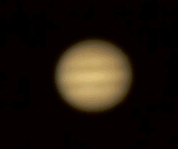
I then did a nearly 9 minute Livestream showing Jupiter. This frame shows what the viewers saw (some in-app digital zoom applied):
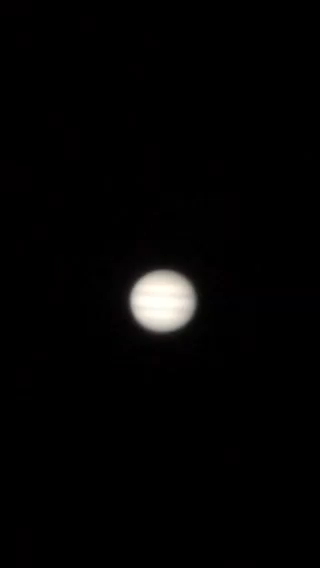
Unfortunately, Jupiter was slightly overexposed. I should have darkened the view a little more with the Polarizing Filter.
I ended the Jupiter Livestream at 1930 MST and slewed to the just past First Quarter Moon. I removed the Polarizing Filter and took this series of photos along the lunar terminator at 231X:
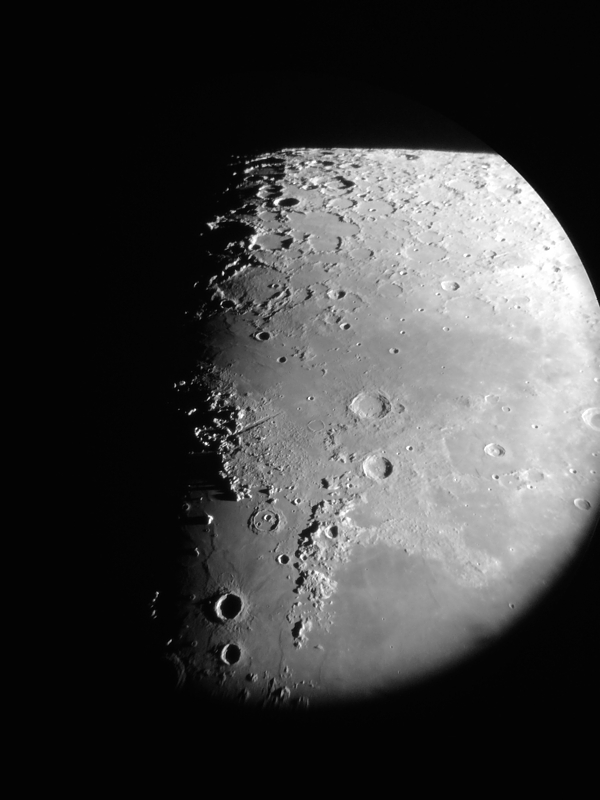
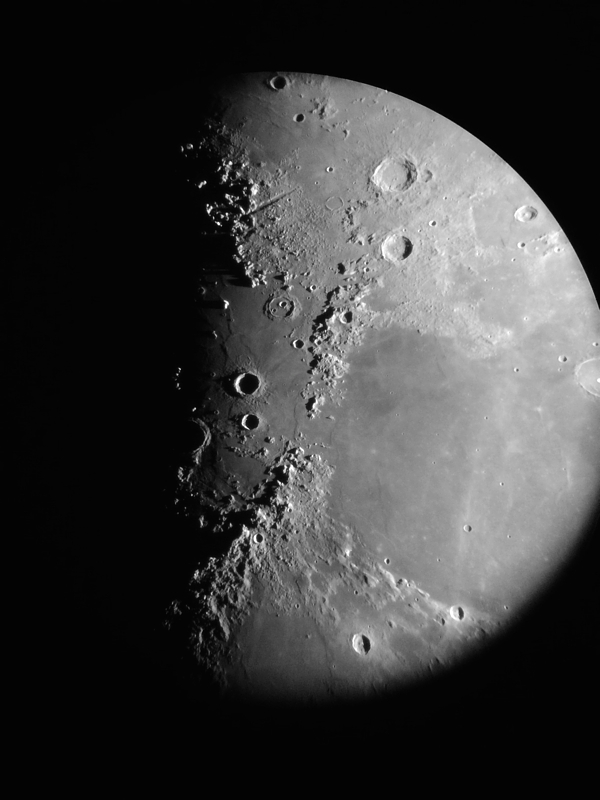
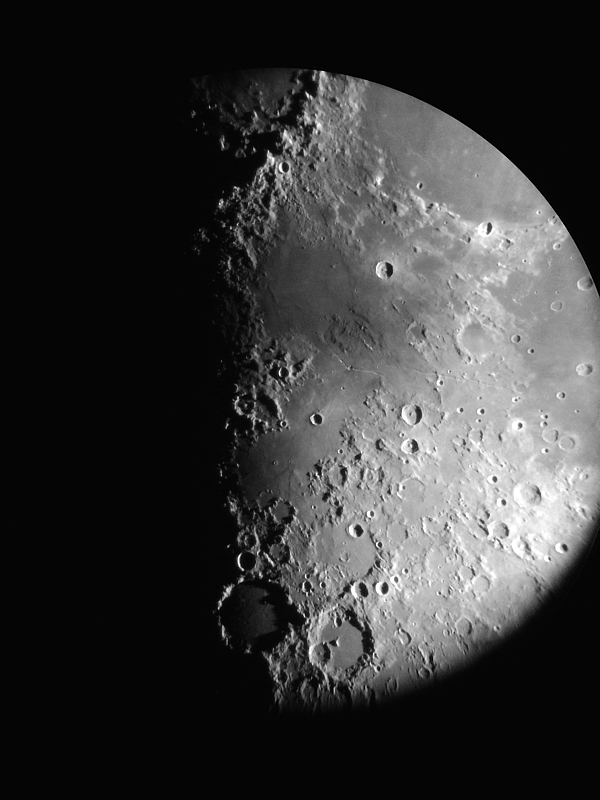
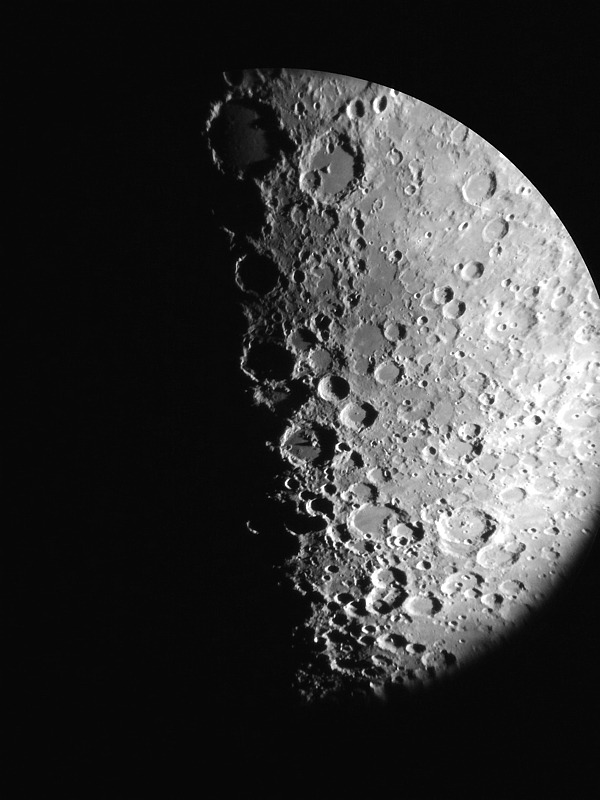
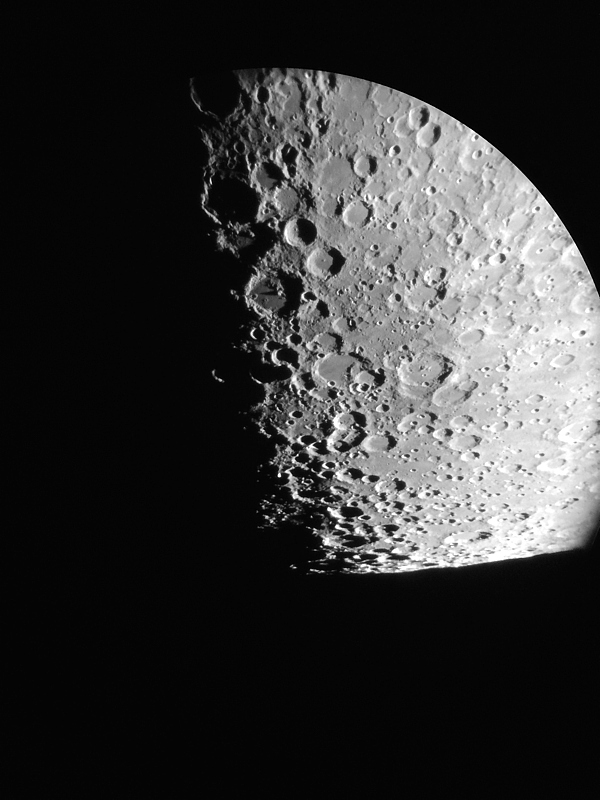
At 1958 MST I started a 19 minute Livestream of the Moon. This is one frame (mirrored) from that video showing what the viewers could see:
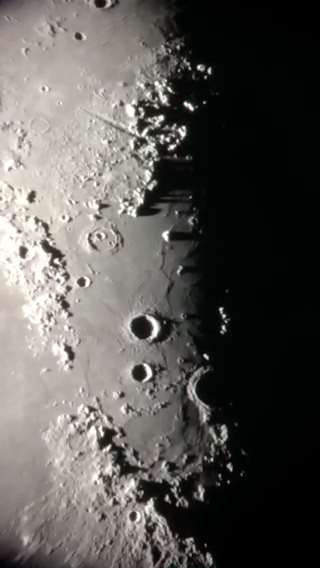
After thanking all the night's Twitter Livestream viewers for joining me and for providing their comments during the shows, I ended the Livestreaming for the night. I will definitely do more of these on future sessions. It is amazing technology. Of course, it has some limitations right now (bright objects only) but this capability can only get better over time.
I removed the afocal adapter and TeleXtender and switched back to a 2" 24mm Ultra Wide Angle eyepiece (83X). Did this handheld iPhone 5s afocal photo:
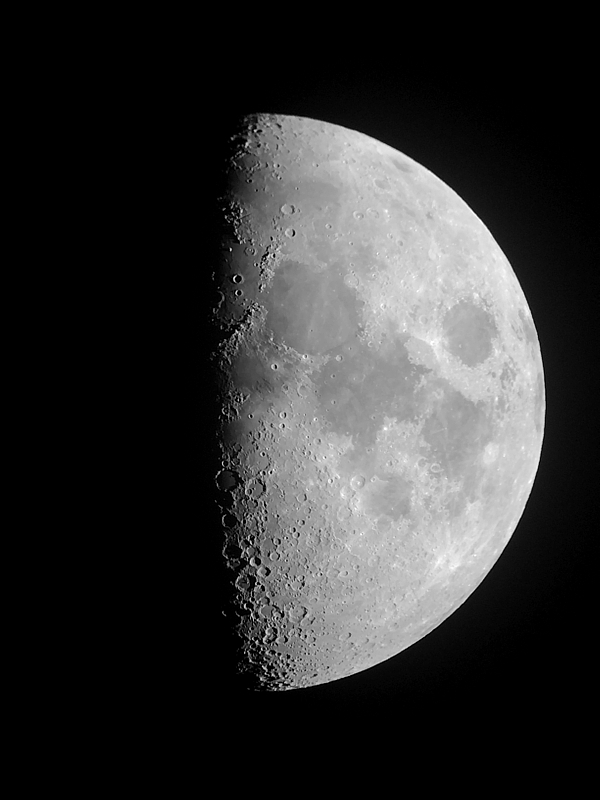
This was my 800th session in Cassiopeia Observatory since "First Light" on 18 August 2009. On to 1000.
|
Close: Friday, 27 March 2015, 2050 MST Temperature: 66°F |
|
Comments are welcome using Email. If you are on Twitter you can use the button below to tweet this report to your followers. Thanks.
Cassiopeia Observatory Home Page
Copyright ©2015 Michael L. Weasner / mweasner@me.com
URL = http://www.weasner.com/co/Reports/2015/03/28/index.html
